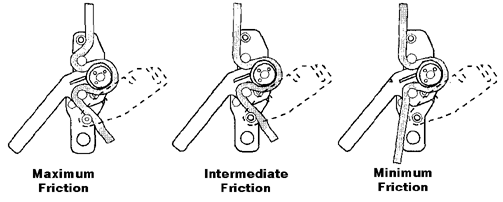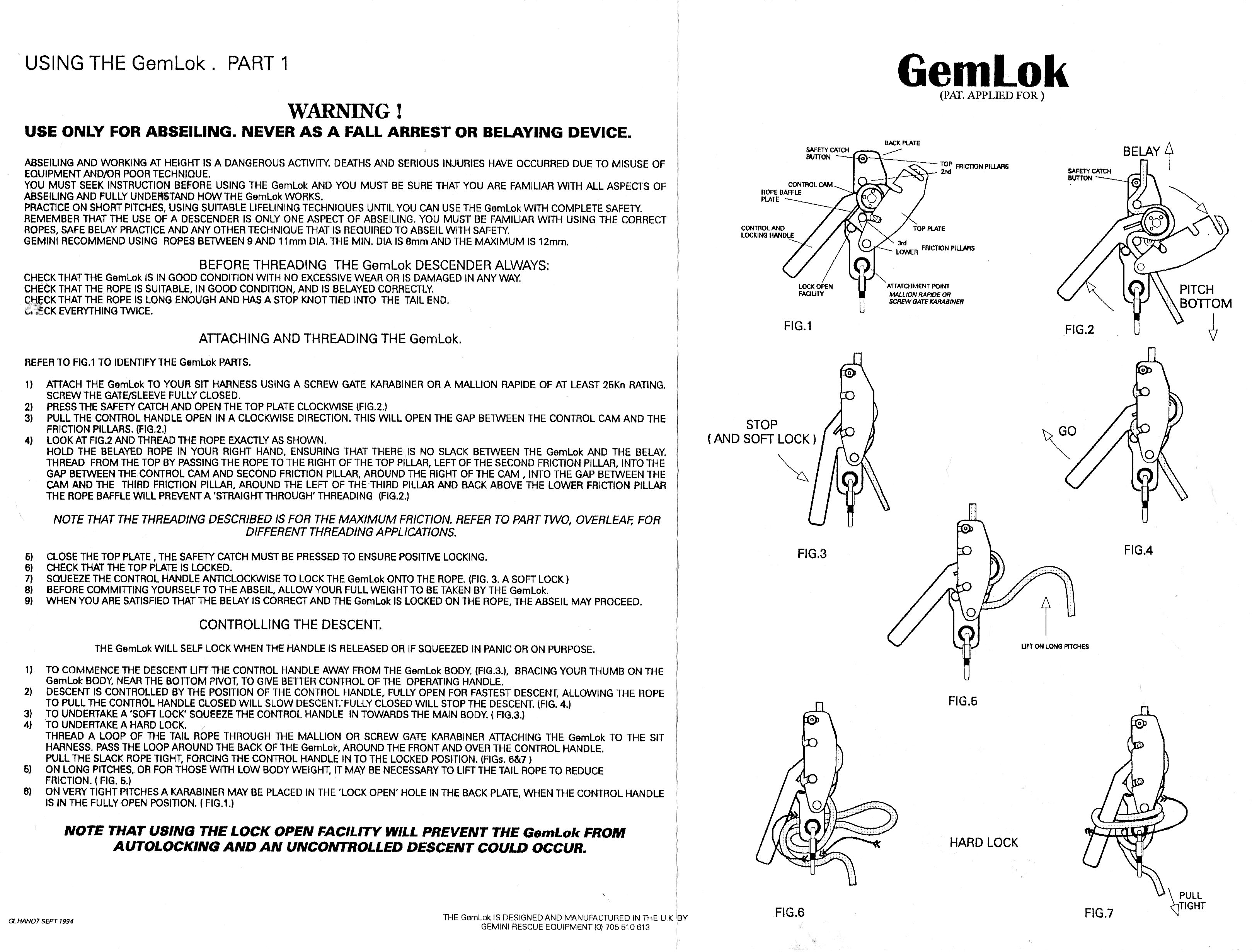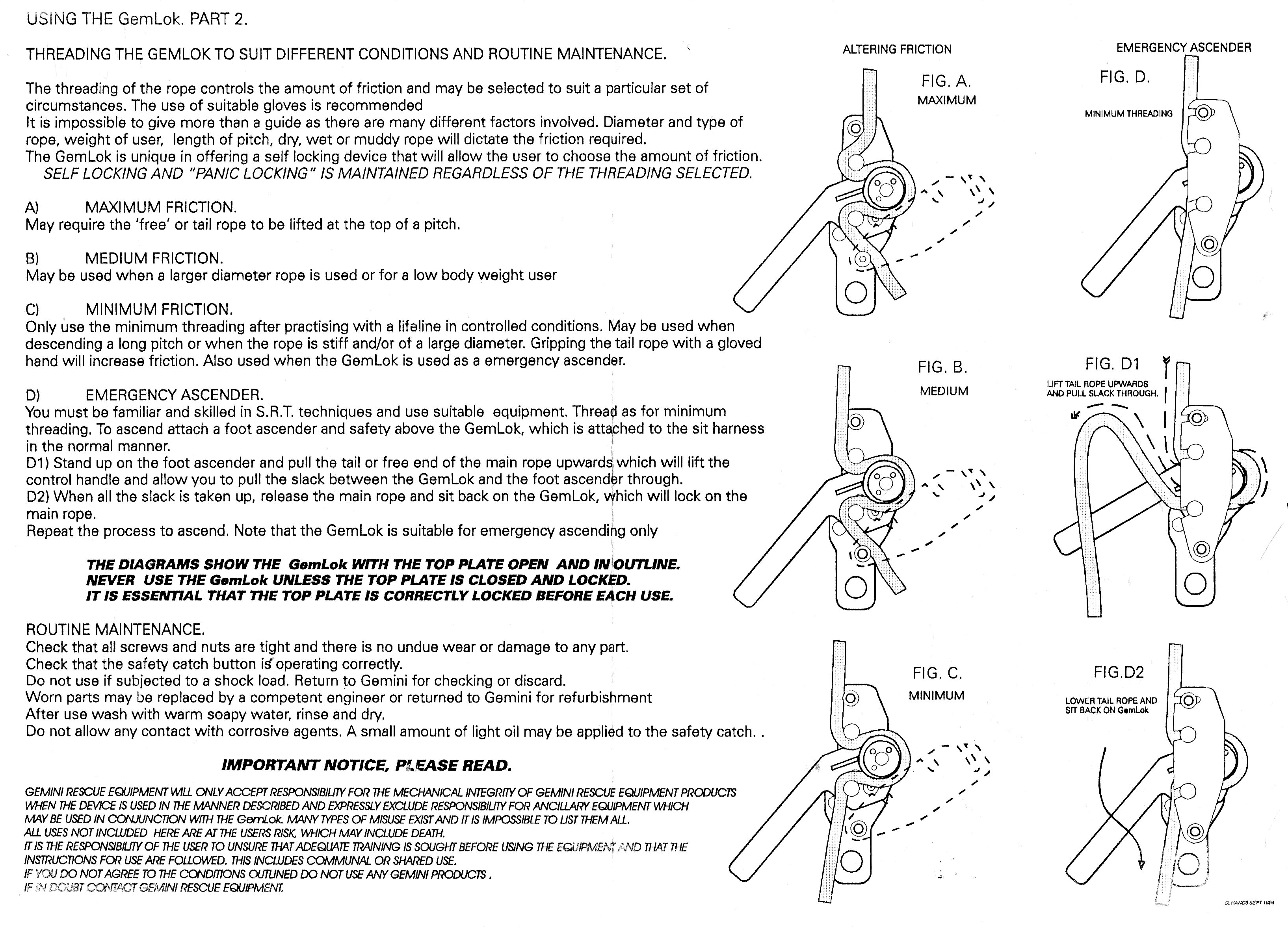Technical details:
I acquired my Gemini Rescue Equip. GemLok from Speleoshoppe in 1994.
My Gemini Rescue Equip. GemLok is 230 mm. tall, 67 mm. wide, 39 mm. thick, and weighs 420 g.
The GemLok has four fixed bollards and one moving bollard.
The fixed bollards are bolted to an aluminum back plate and pinned
so that they cannot rotate. A face plate pivots on the lower bollard.
Three notches in the face plate engage grooves in the remaining
three fixed bollards when the face plate is closed The top notch
has a milled cutout on the inside that is engaged by a spring-loaded
catch mounted in the upper bollard. This keeps the face plate
from opening in use. A button in the upper bollard activates the
catch. The top, second and bottom fixed bollards are grooved to
keep the rope centered, while the third one is cylindrical. The
top bollard is polished stainless steel, the others appear to
be parkerized.
The moving bollard is mounted (with two machine screws) on
a lever that pivots on a bolt through the back plate, beside the
third fixed bollard. A slot in the lever provides clearance for
that bollard. Raising the lever causes the moving bollard to move
away from the middle two fixed bollards. The moving bollard is
grooved, but the groove is eccentric, i.e., it is not concentric
with the bollard. The deepest portion of the groove is on the
side toward the lever, where the rope does not contact the bollard.
The lever has a soft plastic handgrip.
Comments:
At first glance the GemLok looks like it is a stop
bobbin, but it isn't. The rigging is different and the lever
does not work the same way.
Brian Jopling designed the GemLock. He described the Gemlock history in 2010 (Re: SRT descender - J lock. Retrieved 17 Oct. 2010 from https://ukcaving.com/board/index.php?topic=10798.msg139230, Reply #10, 24 Sep 2010):
I designed the 'GemLock' in 1992 when in partnership. The first models were produced (pre PPE days) before I was 100% happy with the design. The partnership ended and I did some mods and produced in 1994 the REACT J Lock. With the advent of a EN spec. I was not inclined to get embroiled with setting up a approved workshop and the cost involved…. So hardware production ceased.
The descender was designed to counter the Petzl 'plummet' in as much as you held it in the go position and letting go or squeezing stopped descent. You could also choose 3 different 'wraps' to change the friction for thicker/thinner ropes or when you had a lot of rope below you - but still have autolock. It was also intended to be a 'one handed' device without the need for a braking crab.
I find that raising the lever to go and squeezing it to stop
takes a bit of getting used to, since almost everything else (cf.
stop bobbins) works the other
way, but it makes some sense. If the user panics (a foolish thing
to do, by the way, and not recommended) and squeezes the handle,
the moving bollard will act as a brake to stop the descent. Similarly,
if the mindless user lets go of the lever, the brake is also activated.


For far more content, use a larger monitor and a full-width window.
Hundreds of cell phone users complained and asked me to for a simpler, mobile friendly site. In particular, they wanted me to limit each page to a small number of pictures and minimize my use of text. This new site provides what they asked for.




